
The Majestic Highlands of Iceland
Explore the wild heart of Iceland in the Highlands, a remote region of stunning landscapes, volcanic activity, and natural beauty.
The Highlands of Iceland are a vast, uninhabited plateau in the center of the country, offering a unique and wild landscape unlike any other. This region is known for its rugged terrain, volcanic activity, and stunning natural beauty. It is a paradise for adventure seekers and nature lovers who wish to experience the raw, untouched beauty of Iceland. The Highlands are home to some of Iceland's most famous natural attractions, including the colorful rhyolite mountains of Landmannalaugar, the vast lava fields of Holuhraun, and the dramatic canyons of Ásbyrgi. Visitors can hike through these breathtaking landscapes, soak in natural hot springs, and explore the many hidden gems that this remote region has to offer. Due to its remote location, visiting the Highlands requires careful planning and preparation. The area is only accessible during the summer months when the roads are open, and a sturdy 4x4 vehicle is essential for navigating the rough terrain. However, for those willing to make the journey, the Highlands offer an unforgettable experience and a chance to connect with nature in its purest form.
Local tips in The Highlands
- Visit during the summer months when the roads are open and accessible.
- Rent a sturdy 4x4 vehicle to navigate the rough terrain.
- Bring warm clothing and waterproof gear, as the weather can be unpredictable.
- Plan your route and accommodations in advance, as services are limited in this remote area.
- Make sure to have a detailed map or GPS device, as cell service can be unreliable.
- Don't miss the natural hot springs in Landmannalaugar for a relaxing soak after a long hike.
The Majestic Highlands of Iceland
The Highlands of Iceland are a vast, uninhabited plateau in the center of the country, offering a unique and wild landscape unlike any other. This region is known for its rugged terrain, volcanic activity, and stunning natural beauty. It is a paradise for adventure seekers and nature lovers who wish to experience the raw, untouched beauty of Iceland. The Highlands are home to some of Iceland's most famous natural attractions, including the colorful rhyolite mountains of Landmannalaugar, the vast lava fields of Holuhraun, and the dramatic canyons of Ásbyrgi. Visitors can hike through these breathtaking landscapes, soak in natural hot springs, and explore the many hidden gems that this remote region has to offer. Due to its remote location, visiting the Highlands requires careful planning and preparation. The area is only accessible during the summer months when the roads are open, and a sturdy 4x4 vehicle is essential for navigating the rough terrain. However, for those willing to make the journey, the Highlands offer an unforgettable experience and a chance to connect with nature in its purest form.
When is the best time to go to The Highlands?
Iconic landmarks you can’t miss
Blue Lagoon
Experience the enchanting Blue Lagoon, Iceland's iconic geothermal spa, surrounded by stunning lava fields and rejuvenating mineral-rich waters.

Hallgrimskirkja
Explore Hallgrimskirkja, Reykjavik's iconic church, a stunning architectural masterpiece offering breathtaking views and a glimpse into Icelandic culture.
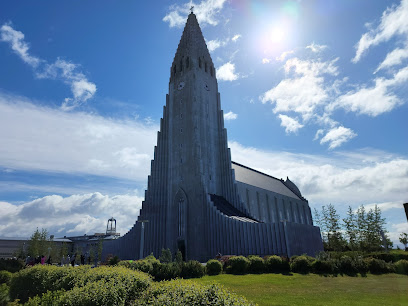
Skógafoss
Explore the breathtaking beauty of Skógafoss, one of Iceland's most iconic waterfalls, where nature and legend intertwine.

Perlan
Discover the wonders of Iceland's nature, history, and culture at Perlan, Reykjavik's iconic landmark with breathtaking views and interactive exhibits.

Sun Voyager
Discover the iconic Sun Voyager in Reykjavík, a stunning sculpture symbolizing adventure and Viking heritage, offering breathtaking ocean views.

Vatnajökull National Park
Discover the breathtaking beauty of Vatnajökull National Park, home to Europe's largest glacier and stunning natural landscapes in Iceland.

Fjaðrárgljúfur
Discover the breathtaking beauty of Fjaðrárgljúfur, a stunning canyon in Iceland, known for its dramatic cliffs and serene river views.

Skaftafell
Explore the breathtaking landscapes of Skaftafell National Park, a must-visit nature preserve in Iceland with stunning trails and glacier views.
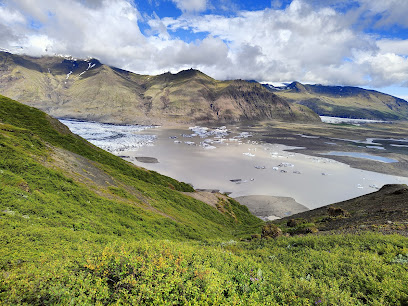
Glaumbær Farm & Museum
Explore the rich cultural heritage of Iceland at Glaumbær Farm & Museum, where history and stunning landscapes come together.
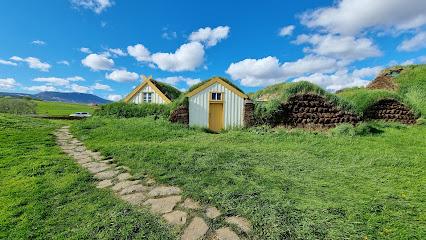
Hjálparfoss
Experience the breathtaking Hjálparfoss Waterfall, a stunning natural wonder surrounded by lush landscapes and unique rock formations in Iceland.
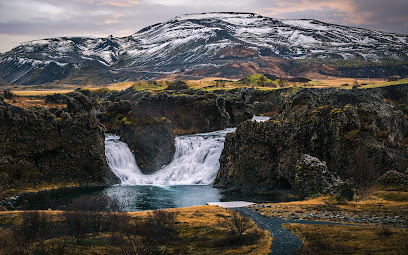
Haifoss
Experience the breathtaking beauty of Haifoss, Iceland's majestic waterfall, surrounded by stunning landscapes and tranquil nature.

Gatklettur
Explore Gatklettur: A breathtaking natural arch in Arnarstapi, Iceland, offering stunning views and unforgettable hiking experiences.

Hveravellir
Explore Hveravellir: A geothermal wonderland in Iceland's Highlands, featuring relaxing hot springs and breathtaking landscapes.

Gjáin
Explore Gjáin Valley, a hidden jewel in Iceland's highlands, filled with stunning waterfalls, lush landscapes, and unique geological wonders.
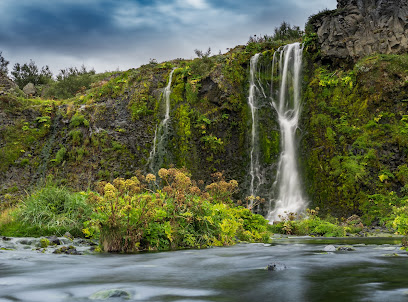
Hengifoss
Experience the breathtaking beauty of Hengifoss, Iceland's tallest waterfall, surrounded by stunning landscapes and unique geological formations.

Unmissable attractions to see
Glaumbær Farm & Museum
Discover Iceland's rich agricultural history at Glaumbær Farm & Museum, featuring traditional turf houses and immersive cultural exhibits.

Hjálparfoss
Discover the enchanting Hjálparfoss waterfall, where nature's beauty meets tranquility in the heart of Iceland's stunning landscapes.

Hengifoss
Discover the breathtaking beauty of Hengifoss, Iceland's stunning waterfall, surrounded by majestic landscapes and rich folklore.

Litlanesfoss
Explore the stunning Litlanesfoss Waterfall in Iceland, a breathtaking natural wonder surrounded by picturesque landscapes and tranquility.

The Herring Era Museum
Discover Iceland's maritime history at The Herring Era Museum in Siglufjörður, where the fascinating world of herring fishing comes to life.

Sigoldufoss
Discover the breathtaking beauty of Sigoldufoss, Iceland's stunning waterfall surrounded by dramatic landscapes and rich natural heritage.

Surtshellir
Discover the enchanting beauty of Surtshellir, Iceland's magnificent lava cave, rich in geological wonders and folklore.

Sænautasel
Explore the captivating history of Iceland at Sænautasel Museum in Egilsstaðir, where ancient culture and heritage come to life.

Hornstrandir Nature Reserve
Explore the untouched wilderness of Hornstrandir Nature Reserve, a paradise for nature lovers and adventure seekers in Iceland.

Ófærufoss
Discover the breathtaking beauty of Ófærufoss, a stunning waterfall in Iceland surrounded by dramatic landscapes and rich nature.
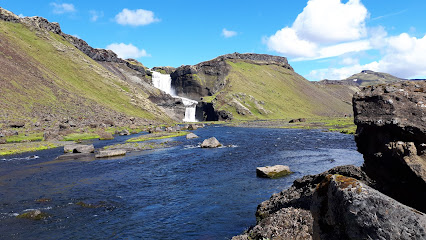
Rauðhólar
Explore Rauðhólar, a stunning volcanic park in Iceland, where nature's beauty meets geological wonders in a serene landscape.
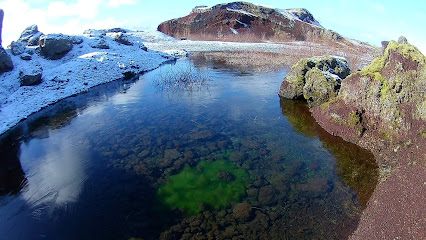
Axlafoss waterfall
Discover the breathtaking beauty of Axlafoss Waterfall, a must-visit natural wonder in the heart of Iceland's highlands.

Raudufossar waterfall
Discover the enchanting beauty of Raudufossar Waterfall, where vibrant red cliffs meet cascading waters in breathtaking Icelandic landscapes.
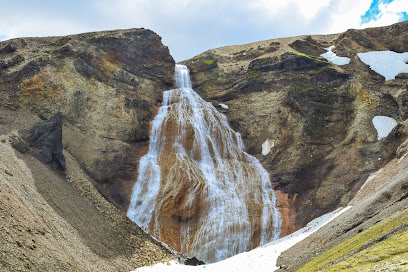
Panorama Ridge
Explore the stunning vistas and serene beauty of Panorama Ridge in Iceland's Central Highlands, a must-visit for nature lovers and adventurers.

Lónsöræfi
Discover the breathtaking beauty of Lónsöræfi, a serene nature preserve in Iceland with stunning landscapes and diverse wildlife.

Essential places to dine
Íslenski barinn
Experience authentic Icelandic cuisine at Íslenski Barinn - where tradition meets modern dining in Reykjavík's vibrant heart.
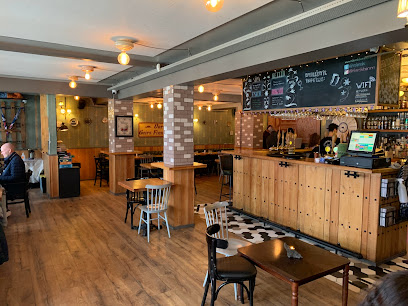
Svarta Kaffið
Discover authentic Icelandic flavors at Svarta Kaffið – cozy soup restaurant serving delicious dishes in freshly baked bread bowls.
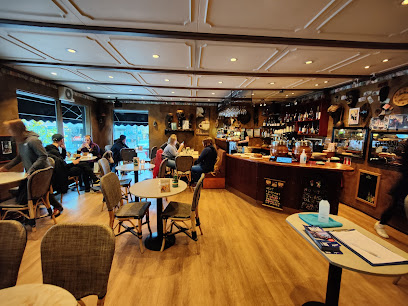
Old Iceland
Experience authentic Icelandic flavors at Old Iceland, where tradition meets taste in a cozy Reykjavík setting.

Grillmarkaðurinn
Discover authentic Icelandic flavors at Grillmarkaðurinn, where local ingredients meet culinary artistry in a stylish setting.

Vogafjós Farm Resort
Discover authentic Icelandic cuisine and warm hospitality at Vogafjós Farm Resort by Lake Mývatn.

Sjávargrillið
Experience exquisite Icelandic cuisine at Sjávargrillið in Reykjavík—where tradition meets innovation in every dish.

Fish Company
Experience exceptional seafood at the Fish Company in Reykjavik - where Icelandic tradition meets global culinary artistry.

Tjöruhúsið
Discover Tjöruhúsið: Where Fresh Seafood Meets Icelandic Tradition in Stunning Ísafjörður.

Eldstó Art Cafe / Restaurant
Discover the culinary artistry at Eldstó Art Cafe / Restaurant in Hvolsvöllur - where fine dining meets local artistry amidst stunning Icelandic scenery.

Geysir Glima restaurant
Experience authentic Icelandic cuisine at Geysir Glima restaurant, surrounded by breathtaking landscapes and geothermal wonders.
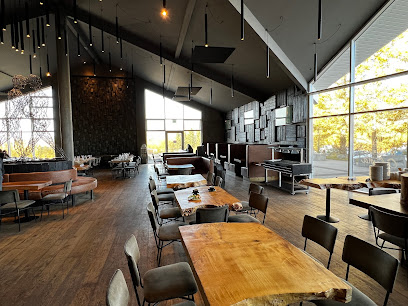
Fjöruborðið
Experience authentic Icelandic seafood at Fjöruborðið in Stokkseyri—home to delicious dishes and stunning coastal views.
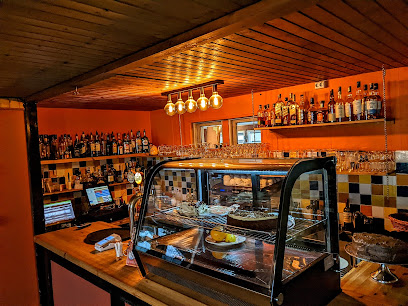
Sjávarborg Restaurant
Experience exquisite Icelandic cuisine at Sjávarborg Restaurant in Hvammstangi - where fresh seafood meets stunning coastal views.

Foodcellar
Experience authentic Icelandic cuisine blended with modern flair at Foodcellar in Reykjavík's Miðborg district.

Daddi's Pizza
Experience the best pizza in Mývatn at Daddi's Pizza – where flavor meets comfort in every slice.

Bautinn Restaurant
Experience authentic Icelandic cuisine at Bautinn Restaurant in Akureyri, where tradition meets modern culinary artistry.
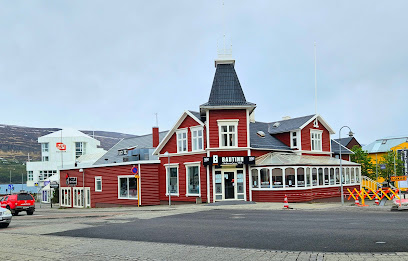
Markets, malls and hidden boutiques
Stuðlagil Canyon Main Access
Explore the stunning Stuðlagil Canyon, a breathtaking destination with vibrant turquoise waters and striking basalt columns, perfect for outdoor enthusiasts.

Kolaportið
Explore Kolaportið in Reykjavik for a unique blend of culture, shopping, and delicious Icelandic cuisine at this vibrant flea market.

Icewear / Vík Wool
Discover high-quality Icelandic wool clothing and outdoor gear at Icewear / Vík Wool, your go-to destination in Vík for all things adventure.

The Icelandic Store
Discover the charm of Icelandic wool at The Icelandic Store in Hafnarfjörður, where quality meets tradition in every skein.

The Handknitting Association of Iceland
Experience the charm of Icelandic wool craftsmanship at The Handknitting Association—your ultimate destination for authentic souvenirs and yarn.
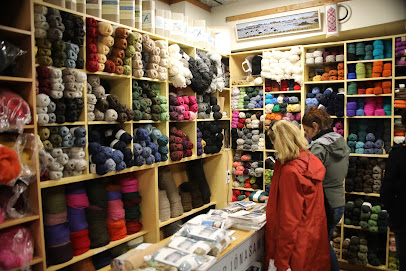
The Highland Center Hrauneyjar
Discover comfort and adventure at The Highland Center Hrauneyjar, the ideal base for exploring Iceland's stunning natural landscapes.

12 Tónar
Discover Reykjavík's vibrant music scene at 12 Tónar – a unique record store, café, and live music venue offering a rich selection of vinyl and local talent.
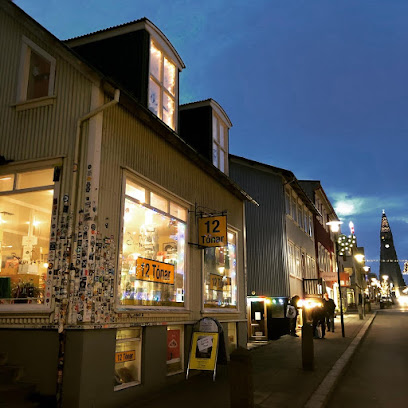
Kirsuberjatréð
Explore Kirsuberjatréð, Reykjavik's vibrant art gallery showcasing the best of contemporary Icelandic creativity and culture.

UNA Local Product / Sveitabúðin Una
Explore the heart of Icelandic craftsmanship at UNA Local Product—your go-to store for unique souvenirs and handmade treasures.

Spúútnik
Explore Spúútnik, Reykjavík's beloved vintage clothing store, offering a unique selection of pre-loved apparel & accessories in a charming setting.

Hólaskjól - Higland Center
Discover the beauty of the Icelandic highlands at Hólaskjól Highland Center, your perfect base for adventure and relaxation.

Arbudir
Discover the charm of Arbudir, a cozy cafe nestled in Iceland's highlands offering delicious snacks and breathtaking views for travelers.

Eiðistorg Shopping Mall
Explore Eiðistorg Shopping Mall in Reykjavík: your ultimate shopping and dining destination for a local Icelandic experience.

Blue Lagoon Store Reykjavik
Explore the Blue Lagoon Store in Reykjavik for Icelandic skincare treasures, featuring natural and effective beauty products sourced from geothermal waters.

MJÚK Iceland ehf
Discover the heart of Icelandic craftsmanship at MJÚK Iceland, where exquisite wool products and local treasures await every visitor.

Essential bars & hidden hideouts
Íslenski barinn
Discover the essence of Icelandic cuisine and culture at Íslenski barinn, a vibrant bar and restaurant in the heart of Reykjavík.

Kol Restaurant
Discover the finest of Icelandic cuisine at Kol Restaurant in Reykjavík, where innovative dishes meet local flavors for an unforgettable dining experience.

Dillon Whiskey Bar
Experience the vibrant nightlife at Dillon Whiskey Bar in Reykjavík, where whiskey, karaoke, and live music create unforgettable memories.

Prikið ehf.
Dive into the lively atmosphere of Prikið ehf., your go-to bar and brunch spot in Reykjavík, offering local cuisine and live music.

Bravó
Experience the vibrant nightlife of Reykjavík at Bravó, where handcrafted cocktails, live music, and a lively atmosphere await.

Kaffibarinn
Discover the heart of Reykjavik's nightlife at Kaffibarinn, a vibrant bar with local brews, great music, and a welcoming atmosphere.

Magic Ice Reykjavík - Ice Bar & Gallery
Discover the enchanting Magic Ice Reykjavík, where ice art meets exquisite cocktails in an unforgettable Arctic adventure.

Skúli Craft bar
Discover the essence of Icelandic brewing culture at Skúli Craft Bar, where a vibrant atmosphere meets an impressive selection of craft beers.

Den Danske Kro ( Danska Kráin )
Discover Den Danske Kro, a top-notch bar in Reykjavík, offering local craft beers and a vibrant atmosphere in the heart of Iceland's capital.

Jungle Cocktail Bar
Discover the ultimate cocktail experience at Jungle Cocktail Bar in Reykjavík, where creativity and ambiance blend for a night to remember.

Slippbarinn
Discover the heart of Reykjavík's culinary scene at Slippbarinn, where fresh ingredients meet innovative flavors in a vibrant atmosphere.

Pablo Discobar
Experience the vibrant nightlife of Reykjavík at Pablo Discobar, where expertly crafted cocktails meet a lively atmosphere in the heart of the city.

R5 Micro Bar
Experience the cozy atmosphere and craft drinks at R5 Micro Bar, Akureyri's favorite spot for relaxation and socializing.

Ölstofa
Experience the vibrant nightlife of Reykjavík at Ölstofa, a beloved bar known for its craft beers and welcoming atmosphere.

Ölstofa Akureyrar - Local Beer
Discover the best local beers and a cozy atmosphere at Ölstofa Akureyrar, the heart of Akureyri's craft beer scene.

Local Phrases about The Highlands
-
- HelloHalló
[haut-lo] - GoodbyeBless
[bless] - YesJá
[yow] - NoNei
[nay] - Please/You're welcomeGjörðu svo vel
[gyor-thoo-svo-vel] - Thank youTakk fyrir
[tahk-feer-ir] - Excuse me/SorryFyrirgefðu
[feer-ir-gef-thu] - How are you?Hvernig hefur þú það?
[kver-nik-he-vur-thoo-thath] - Fine. And you?Fínt. Og þú?
[feent-oh-thoo] - Do you speak English?Talar þú ensku?
[ta-lar-thoo-ens-koo] - I don't understandÉg skil ekki
[yeg-skil-ekki]
- HelloHalló
-
- I'd like to see the menu, pleaseÉg væri til í að sjá matsedilinn, takk
[yeg-vair-ee-til-eeth-syaw-mat-seh-thil-inn-tahk] - I don't eat meatÉg borða ekki kjöt
[yeg-bor-tha-ekki-chyot] - Cheers!Skál!
[skowl] - I would like to pay, pleaseÉg væri til í að greiða, takk
[yeg-vair-ee-til-eeth-gray-tha-tahk]
- I'd like to see the menu, pleaseÉg væri til í að sjá matsedilinn, takk
-
- Help!Hjálp!
[hyawlp] - Go away!Farðu í burtu!
[far-thoo-ee-bur-tu] - Call the Police!Hringdu í lögregluna!
[hring-doo-ee-log-re-gluna] - Call a doctor!Hringdu í lækninn!
[hring-doo-ee-layk-nin] - I'm lostÉg er týndur
[yeg-ayr-tin-thur] - I'm illÉg er veikur
[yeg-ayr-vay-kur]
- Help!Hjálp!
-
- I'd like to buy...Ég væri til í að kaupa...
[yeg-vair-ee-til-eeth-cow-pa] - I'm just lookingÉg er bara að skoða
[yeg-ayr-bara-ath-skow-tha] - How much is it?Hvað kostar það?
[kva-th-kos-tar-thath] - That's too expensiveÞað er of dýrt
[thath-ayr-of-dee-rt] - Can you lower the price?Getur þú lækkað verðið?
[ge-tur-thoo-lay-kauth-ver-thith]
- I'd like to buy...Ég væri til í að kaupa...
-
- What time is it?Hvað er klukkan?
[kva-th-ayr-kloo-kan] - It's one o'clockKlukkan er eitt
[kloo-kan-ayr-ayt] - Half past (10)Hálf tíu
[howlf-tee-oo] - MorningMorgunn
[mor-goon] - AfternoonSíðdegis
[seed-deh-yeesh] - EveningKvöld
[kvowl-th] - YesterdayÍ gær
[ee-gighr] - TodayÍ dag
[ee-dahg] - TomorrowÁ morgun
[ow-mor-goon] - 1Einn
[ayt-n] - 2Tveir
[t-vay-r] - 3Þrír
[threer] - 4Fjórir
[fyow-rir] - 5Fimm
[fim] - 6Sex
[sehx] - 7Sjö
[syow] - 8Átta
[ow-tha] - 9Níu
[nee-oo] - 10Tíu
[tee-oo]
- What time is it?Hvað er klukkan?
-
- Where's a/the...?Hvar er ...?
[kvar-ayr] - What's the address?Hvað er heimilisfangið?
[kva-th-ayr-hay-mil-is-fan-gith] - Can you show me (on the map)?Getur þú sýnt mér (á kortinu)?
[ge-tur-thoo-seent-mayr-ow-kor-thi-nu] - When's the next (bus)?Hvenær kemur næsti (strætisvagn)?
[kver-nayr-ke-mur-nay-sti-stray-tis-vagn] - A ticket (to ....)Einn miða (til ...)
[ayt-n-mee-tha-til]
- Where's a/the...?Hvar er ...?
History of The Highlands
-
The Highlands of Iceland were primarily formed through volcanic activity and glacial movements. The area is characterized by vast lava fields, rocky deserts, and expansive glaciers. This unique landscape began to take shape around 16 million years ago during the Miocene and Pliocene epochs, shaped by the Mid-Atlantic Ridge that runs through Iceland. The region's geological activity continues to this day, contributing to its dynamic and ever-changing scenery.
-
Though the Highlands are largely uninhabitable due to their harsh conditions, evidence suggests that the area was sporadically visited by early Icelandic settlers. These settlers, known as the Norsemen, arrived in Iceland around the late 9th century. They primarily used the Highlands for summer grazing lands, known as 'afréttir,' which were critical for their livestock.
-
The Icelandic Sagas, a series of epic narratives written in the 13th century, recount many events that occurred in the Highlands. One of the most famous sagas, 'Njáls Saga,' mentions the Highlands as a place of refuge and treacherous travel. The inhospitable terrain often served as a backdrop for tales of feuds, escapes, and survival.
-
During the medieval period, the Highlands served as an important but dangerous corridor for trade. Merchants and travelers braved the harsh environment to transport goods between the north and south of Iceland. These routes, known as 'leiðir,' were essential for the country's economy, despite the perilous conditions that often led to lost lives and goods.
-
In the late 18th and early 19th centuries, the Highlands saw a significant depopulation due to a series of natural disasters, including volcanic eruptions and harsh winters. This period, often referred to as the Highland Clearances, forced many inhabitants to abandon their farms and relocate to more hospitable areas. The region's harsh environment became even more pronounced during this time.
-
The 20th and 21st centuries have seen increased interest in the Highlands from both scientists and tourists. Modern technology has allowed for more detailed exploration and mapping of this rugged terrain. Conservation efforts have also been put in place to protect the fragile ecosystems and unique geological features of the area. Today, the Highlands are a popular destination for adventure tourism, offering activities such as hiking, glacier walking, and off-road driving.
The Highlands Essentials
-
The Highlands in Iceland are accessible primarily by road. The nearest major city is Reykjavik, which is about 200-300 kilometers away, depending on your specific destination within The Highlands. From Reykjavik, you can rent a car and drive, keeping in mind that some routes may require a 4x4 vehicle due to rough terrain. Alternatively, organized tours and shuttle buses are available from Reykjavik during the summer months. Note that many parts of The Highlands are only accessible during the summer (June to September) due to snow cover in the winter.
-
Within The Highlands, transportation options are limited. Renting a 4x4 vehicle is highly recommended for flexibility and ease of travel, as many routes are F-roads (mountain roads) that are not suitable for regular cars. Public transport is virtually non-existent in this remote area. If you prefer not to drive, consider booking an organized tour that includes transportation. Always check the road conditions and closures at road.is before setting out.
-
The official currency in Iceland is the Icelandic Krona (ISK). Credit and debit cards are widely accepted throughout the country, including remote areas like The Highlands. However, it is advisable to carry some cash, especially if you plan to visit very remote locations where card payment facilities might not be available. ATMs are available in larger towns before you enter The Highlands, such as in Reykjavik or Akureyri.
-
The Highlands are generally safe, but the remoteness and harsh conditions require careful preparation. There are no high-crime areas targeting tourists. However, the main risks are natural hazards such as sudden weather changes, river crossings, and rugged terrain. Always inform someone of your travel plans, carry a GPS and a detailed map, and ensure you have sufficient supplies, including food, water, and a first-aid kit. Check safetravel.is for up-to-date safety information.
-
In case of an emergency, dial 112 for assistance. This number connects you to police, fire, and medical services. Given the remote nature of The Highlands, response times can be longer than in urban areas. It is strongly recommended to carry a satellite phone and consider renting a personal locator beacon (PLB) for emergencies. Make sure you have comprehensive travel insurance that includes coverage for search and rescue.
-
Fashion: Do wear layers and waterproof clothing; the weather can change rapidly. Avoid wearing jeans as they do not dry quickly. Religion: Respect the natural environment, which many locals consider sacred. Public Transport: Public transport is not available in The Highlands. Plan accordingly. Greetings: A simple 'hello' or 'góðan daginn' (good day) is sufficient. Icelanders are generally informal. Eating & Drinking: Do try local foods if available, such as dried fish and skyr. Don’t leave litter; practice 'leave no trace' principles.
-
To experience The Highlands like a local, plan your visit during the brief summer months when the area is accessible. Participate in guided hikes to learn about the unique geology and history of the area. Join a local tour group for activities such as glacier hiking or ice cave exploration. Visit natural hot springs for a relaxing soak and converse with locals who often frequent these spots.
Nearby Cities to The Highlands
-
Things To Do in Selfoss
-
Things To Do in Hveragerdi
-
Things To Do in Kopavogur
-
Things To Do in Hafnarfjordur
-
Things To Do in Reykjavik
-
Things To Do in Borgarnes
-
Things To Do in Grindavik
-
Things To Do in Keflavik
-
Things To Do in Blonduos
-
Things To Do in Saudarkrokur
-
Things To Do in Akureyri
-
Things To Do in Stykkisholmur
-
Things To Do in Dalvik
-
Things To Do in Olafsvik
-
Things To Do in Husavik













